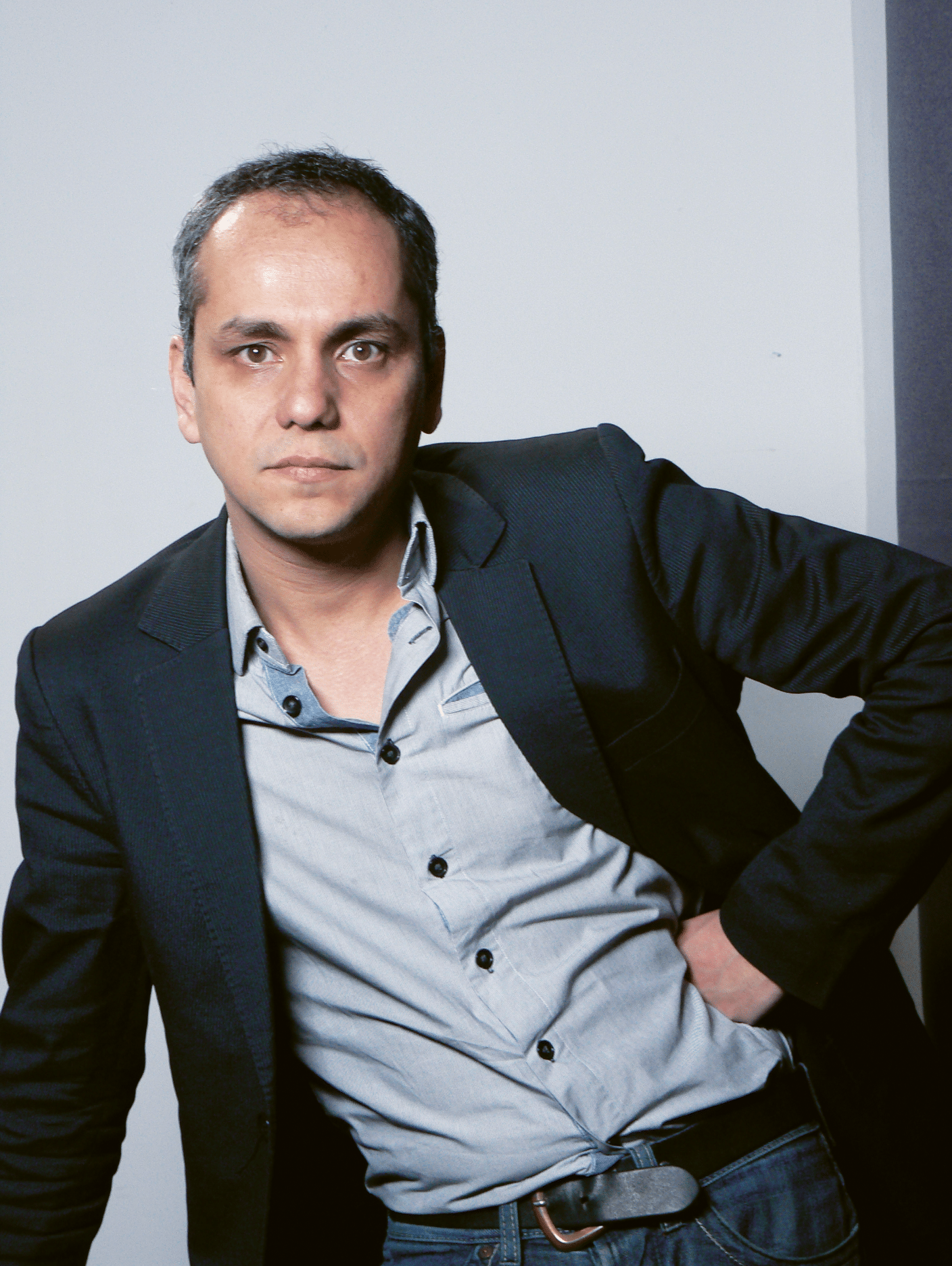
Dossier
Brussels mag N°18
Portrait
TEXT MARIE HONNAY
Curator of La Verrière, the exhibition space of the Hermès Foundation, Guillaume Désanges immerses us backstage in the space that intends to rethink the story of art.
Protecting creation
In 2013, when the Hermès Foundation proposed to the ParisianGuillaume Désanges, art critic and independent expert, that he organise the programming for La Verrière, the exhibition area located at the back of the Hermès boutique on Boulevard de Waterloo, they gave him a free hand. Right from the start, Guillaume Désanges chose to capitalise on the freedom he was offered, but also on the atypical configuration of La Verrière. According to Guillame Désanges, “Its topography – you have to walk through the store to get to the exhibition area – obviously makes the area very particular. I immediately thought of the metaphor of a laboratory with a concealed entrance, almost as though the store was protecting us. At La Verrière, I am not subjected to the constraints of the art market which sometimes constitutes a restraint on creativity. The principle of the Hermès Foundation is that at the end of the exhibition, the artists recuperate their work. Another luxury is that, unlike what is often the case in cultural institutions, there is absolutely no obligation to please the ‘general public’. The freedom that I am able to give to the artists allows me to invite them to express themselves on the major issues that concern the art world today.”
The luxury of having the means
Rather than proposing a series of exhibitions, Guillaume Désanges has chosen to work in thematic cycles. “I have been given the luxury of having a large area available and the production means and time (the cycles are developed over three years); I can transmit this to the artists who are exhibiting at La Verrière. After having thought at the time of the first cycle, about the gestures and the thoughts, i.e. on the end of the separation between the body and the spirit and, in the framework of a second cycle, about the relationship between conceptual or mathematical art and a more poetic approach; I actually approach the question of what I called ‘an ecology of practices’ in other words, the end of the opposition that subsists in the universe of art. The exhibition of the artist Babi Badalov, of Azerbaijani origin, which we presented in February, decompartmentalized in a very subtle manner art, graphic art and craftsmanship.” By programming international artists, as well as Belgian artists, Guillaume Désanges emphasizes how self-evident it is that La Verrière is rooted in the cultural scene of Brussels, “my goal is to offer a vision that is different from or complementary to what is shown elsewhere. This is all the more so because we are fortunate in addressing a loyal Brussels public. When I decided to exhibit the work of the Brussels artist Jacqueline Mesmaeker, I wanted to show the work of a major figure on the local scene – symbolic because of her past as a teacher – yet her work is not well known enough. My role as a curator is to show or exhibit more than once the work of young artists, and also that of those artists who, to a certain extent, have remained on the sidelines in the story of art”.
Rooted in Brussels
Brussels is multicultural, its central geographical position, and the absence of formalism that can be observed in the capital, Guillaume Désanges admits are not alien to his overall reflection on art and the direction he wishes to give to this Brussels exhibition space. “Before La Verrière, I had often worked in Belgium. Yet, even after more than 10 years, the city continues to intrigue me from many points of view. It is as though I cannot always understand it. With Brussels, as with contemporary art, I have a relationship that is both mobile and curious, which forces me to be continually asking myself new questions. Brussels is an open city, where it is an issue of collaboration rather than competition, where fantasy reigns, at the limit of the fantastic. In perfect opposition to its austere, rational architecture, and its status as an administrative capital, the town cultivates its share of dream qualities”, states Guillaume Désanges. It is the ideal place to surf the changing paradigms that can be observed in the world of today. “What interests me in art is to challenge certain dominant forms that still subsist in society and even in art circles. The exhibition that we will hold from April will feature the artist from Guadeloupe Minia Biabiany – the fourth element of our current cycle – which highlights this direction. She will tackle identity concerns and also the place of women in this post-colonial era. Once again, the material itself (notably through the sculptures that the public will be allowed to handle) will be at the very centre of her intention as if to build on our desire to create within La Verrière a standalone experience. This is proof that at a time when certain institutions, social networks forcing their hand, design their exhibitions with a purely photogenic approach, the physical space remains at the heart of our intentions.”


Dossier

1 establishment, 3 trades

Face-à-face

Graphic art

Behind the scenes

7th art